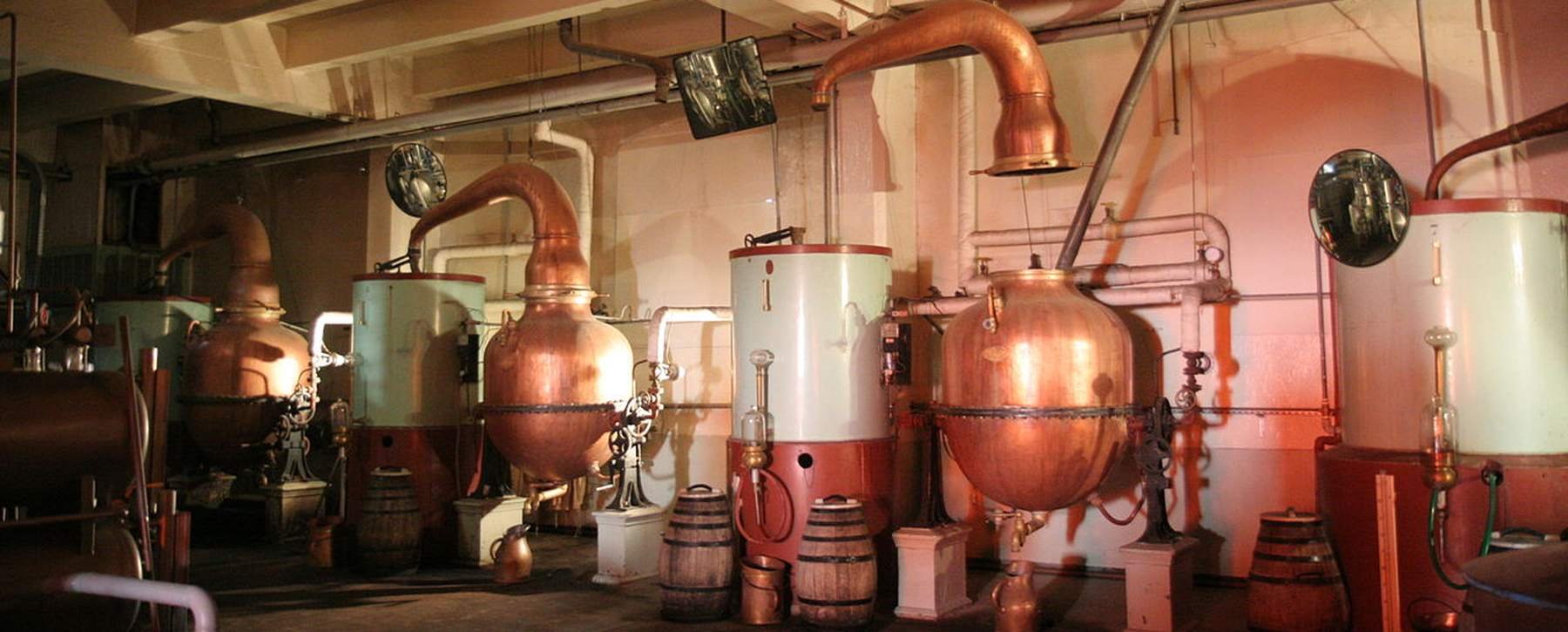
The cellars of the Chartreuse
History of the liqueurs of the Chartreuse
The history of liqueurs of the Chartreuse dates back to the beginning of the 17th century, in 1605 exactly, when the Parisian monks of the Chartreuse de Vauvert received from the hands of the Duke of Estrées a manuscript revealing the recipe for a mysterious elixir, composed of an immense part of the medicinal plants then known to apothecaries. The formula being very complex, it was not studied until 1737, by the apothecary monk of Grande-Chartreuse near Grenoble. Thirty years of study and testing were necessary for Brother Jérôme Maubec to fix the recipe for what became "the vegetable elixir of Grande-Chartreuse". The liquor, drawn from more than 130 different plants, then makes 70% alcohol. The Chartreuse verte, less strong at 55 °, was developed in 1840. It was very successful in the Dauphinois. The even softer yellow chartreuse has a 43 ° alcohol content. The history of the production and marketing of the Chartreuse has known turbulent episodes: the French Revolution, the exile of the Carthusians in Spain at the beginning of the 20th century, or the destruction of the monks' distillery in a landslide in 1935.
Chatreuse manufacturing
The Chartreuse is still marketed today by the Chartreux Fathers. The formula, which is based on the ancestral manuscript of the Duke of Estrées, is kept secret: only two monks of the Carthusian order know the details of the production of the elixir. 130 plants still make up the liqueur. They are sent to the Monastery of Saint-Pierre-de-Chartreuse, in the "plants room" where they will be sorted, dried, crushed, and dosed according to the formula of 1605. The plants are then sent to the distillery of Aiguenoire . They will undergo the stages of maceration in alcohol and distillation in stills. The alcoholates obtained will then be mixed and added with honey and sugar syrup. The Carthusian monks jealously guard the secret of the green color of the liquor. The elixir is then aged in the cellar of Voiron, the longest liquor cellar in the world. Bottling is carried out on the same site, above the cellars.
Visit of the Chartreuse cellars
To understand everything about the history of the Chartreuse and its manufacturing process, two visits are complementary: that of the museum of the Grande Chartreuse, in Saint-Pierre-de-Chartreuse near the monastery of the Carthusian fathers, and those of the historic cellars from Voiron. 2 km from the monastery founded by Saint-Bruno, the Grande Chartreuse museum can be visited with audio guides from April to November. To discover the cellar of Voiron, renowned for its record length, several formulas are possible. You can opt for a visit to the classic site, that is to say in the company of a guide and followed by a tasting, or choose a more original option by booking for a thematic visit: history secret, 5 senses , cocktail, or with herbal tea workshop for children. The average duration of guided tours, thematic or classic, is 1h30. The Chartreuse cellars shop opens daily in Voiron.